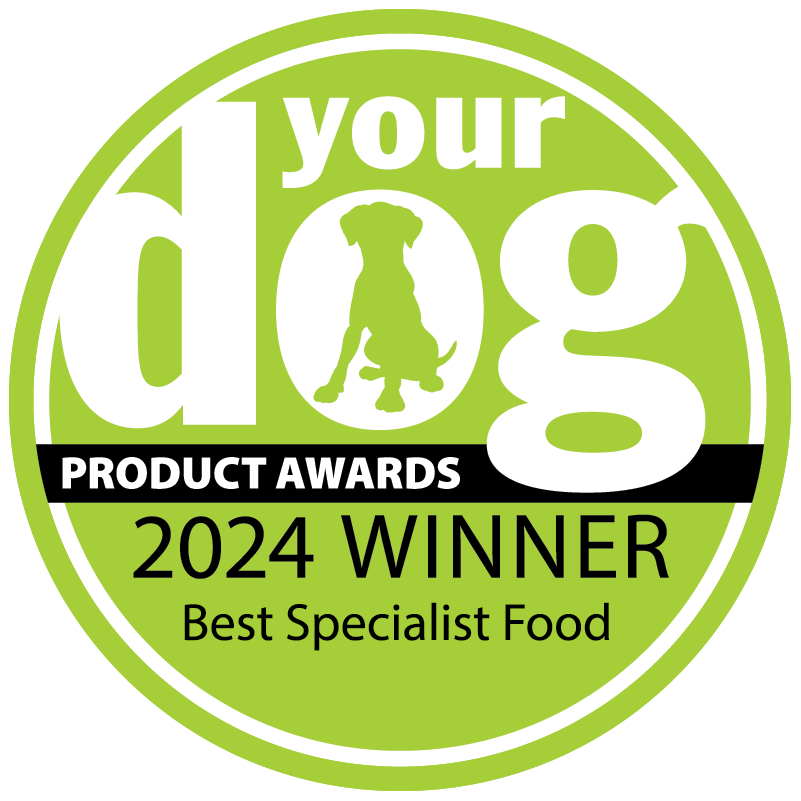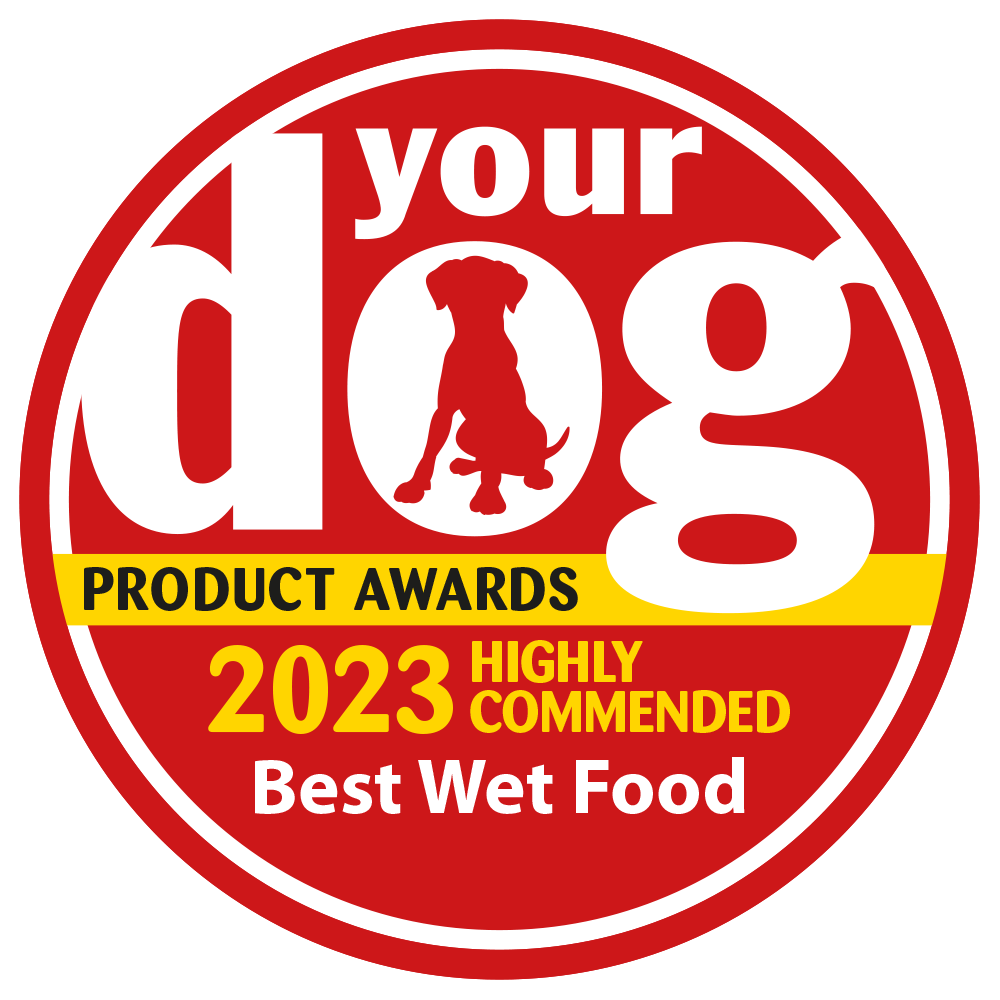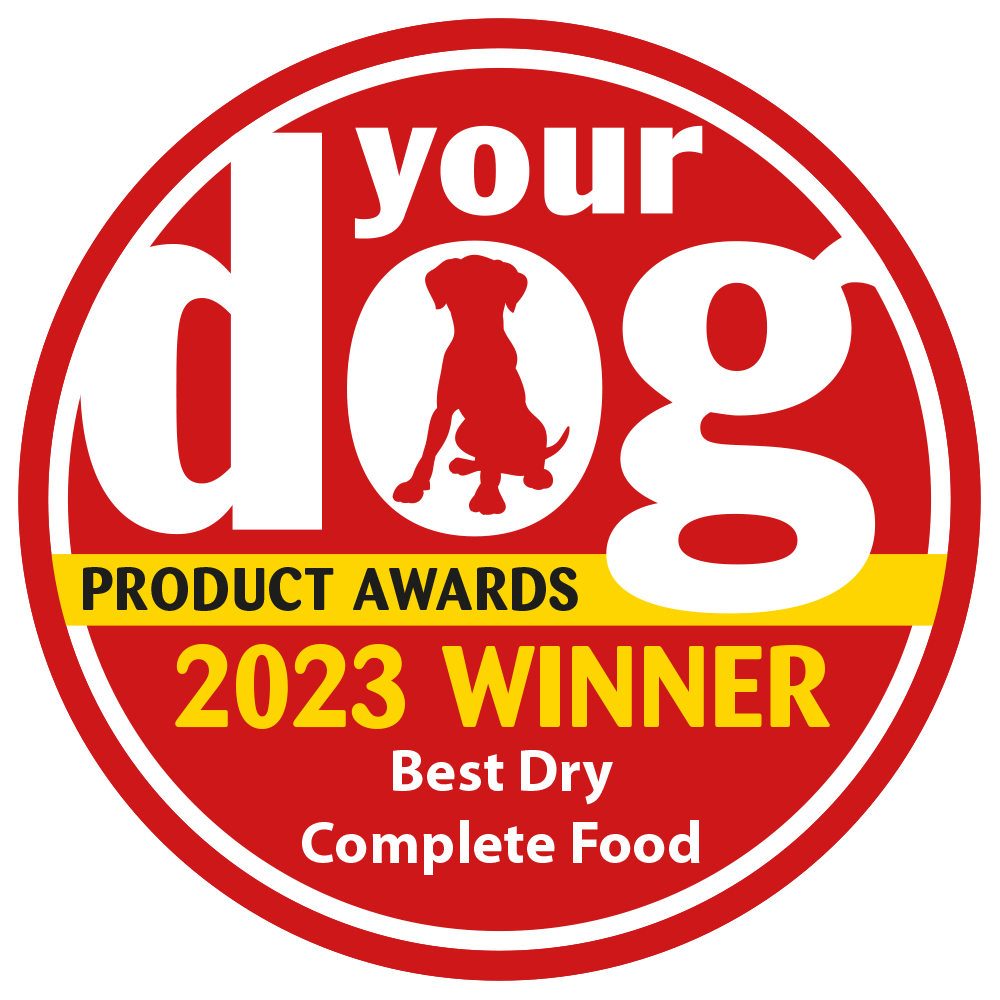
Nobody likes that itchy feeling, and your dog is no exception. There are several factors that can have an effect on the condition of your pet’s skin, but the most common offender, just like in humans, is allergies. More specifically than that, often times the culprit is specifically a food allergy. That’s where Burns comes in: with our hypoallergenic dog food for itchy skin.
Unfortunately, one of life’s great curses is that we can’t talk to our pets to help them figure out what’s bothering them. Instead, we’re left to our own devices, but there’s a lot that we can do on their behalf.
Food isn’t the only thing that can cause itching in dogs, so make sure to identify the problem as best you can. Have a look at our guide How to Spot a Skin Allergy in Your Dog, where we explain exactly what to look out for.
Crucially though, if there are no other indicators to why your dog might be scratching, or the symptoms don’t let up when the season changes, it’s likely that their allergies aren’t environmental: it’s time to start looking at your dog’s diet.
The easiest way to target itchy skin caused by a dietary allergy is to switch your pet’s food to something new with a classic technique: the dog food elimination diet.
It’s difficult and time-consuming to cut out one ingredient at a time, not to mention your poor pet’s suffering is drawn out the longer it takes to find the true culprit. That’s why we recommend a complete do-over of their diet in one go.
Start by noting down everything your dog ingests – treats, snacks, the ingredients of their current main food, and even any human food you might sneak them as a bonus. Then introduce them to a whole new diet, purposefully avoiding any of these previous items. If their itchy skin goes away, it was probably something they ate!
The problem with dietary allergies in dogs is that the most common ones are typically ingredients like beef, wheat, soya and dairy. As a dog owner, you’ll probably also recognise that these ingredients are common in a lot of dog food mixes. Sometimes what’s bad for us just tastes so good! That’s why our hypoallergenic dog food focuses on novel ingredients that are just as tasty.
Dogs need protein as the main ingredient of their diet. It’s essential as a provider of amino acids, support for their immune system, creator of a healthy coat, and more. However, if you’re trying to sniff out an allergy in your canine companion, common proteins like beef and chicken are often the answer.
That’s why at Burns, we create hypoallergenic dry dog food that prioritises other types of protein – we know as well as you do that dogs with allergies deserve a delicious dinner, too!
Pork is generally a more novel protein in dog food than beef, chicken or lamb, so it could be a good source to swap out for if you’re testing an allergen in your pet. It can also be easier to digest than other more common proteins, so it’s a handy first port of call for sensitive stomachs and skin.
While pork is an excellent alternative, the golden tickets in an elimination diet are duck and fish. These are not only uncommon allergens, but they’re also far less likely to have been consumed by your dog in the past, making them an easier alternative to test against than other common meat sources.
Ultimately, the most important thing in an elimination diet is to ensure you’re changing out your pet’s main protein source to one they haven’t had before, or at least haven’t had since before they started experiencing symptoms of itchiness. You’ll need a totally new and alternative diet for the best chance of success.
Now here comes the question you’ve been waiting for: what can I give my dog for itchy skin? It’s all well and good knowing which ingredients to avoid, but we understand that pet parents can get nervous about giving their fur babies the right diets. That’s why we design specialist dog food for sensitive skin, with common allergies and sensitive skin at the forefront of our consideration.
Our hypoallergenic dog food, put simply, is a specially formulated dog food for itchy skin and other unpleasant symptoms your dog might be experiencing due to a food allergy. We prioritise novel sources of protein like duck, fish and pork, and avoid common allergens like wheat and dairy to give your pooch the best chance at finding a diet that suits their system.
What’s also crucial with our hypoallergenic dog food is that we don’t just target one element: we also use ingredients like brown rice so that our recipes are gluten-free, and focus on novel carbohydrates like wholegrain maize and potato. A rich diet made up of less common ingredients results in the best dog food for itchy skin, as you’re more likely to be eliminating the cause of the issue – we’re providing simple, kinder recipes with fewer ingredients.
While food allergies are a common cause for itchy skin in dogs, it isn’t guaranteed to be the case. For example, if their itching appeared after a change in shampoo, consider whether this might be the cause instead. Hypoallergenic dog food is always a good call, but it won’t fix your dog’s itchy skin if the culprit isn’t dietary!
As a general rule of thumb, it’s always better to be on the safe side when you’re debating booking in with a vet. If you’ve changed your dog’s diet to a dog food for itchy skin and tried a new shampoo but they’re still scratching away, it’s worth asking a professional if there might be a different cause. Alternatively, if your dog is itching to the point of visible irritation, hair loss, or causing open wounds, you should definitely get your dog to a vet.
If your pet's struggling with itchy skin, try the Burns range of dog food for sensitive skin.







